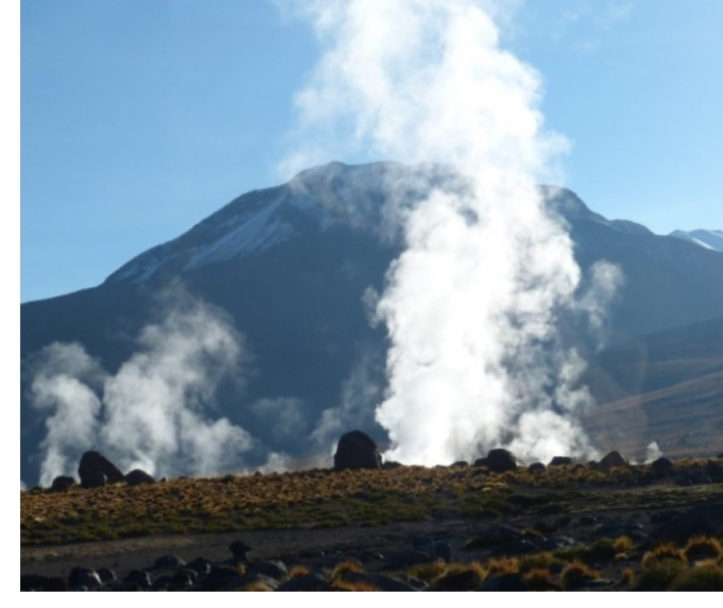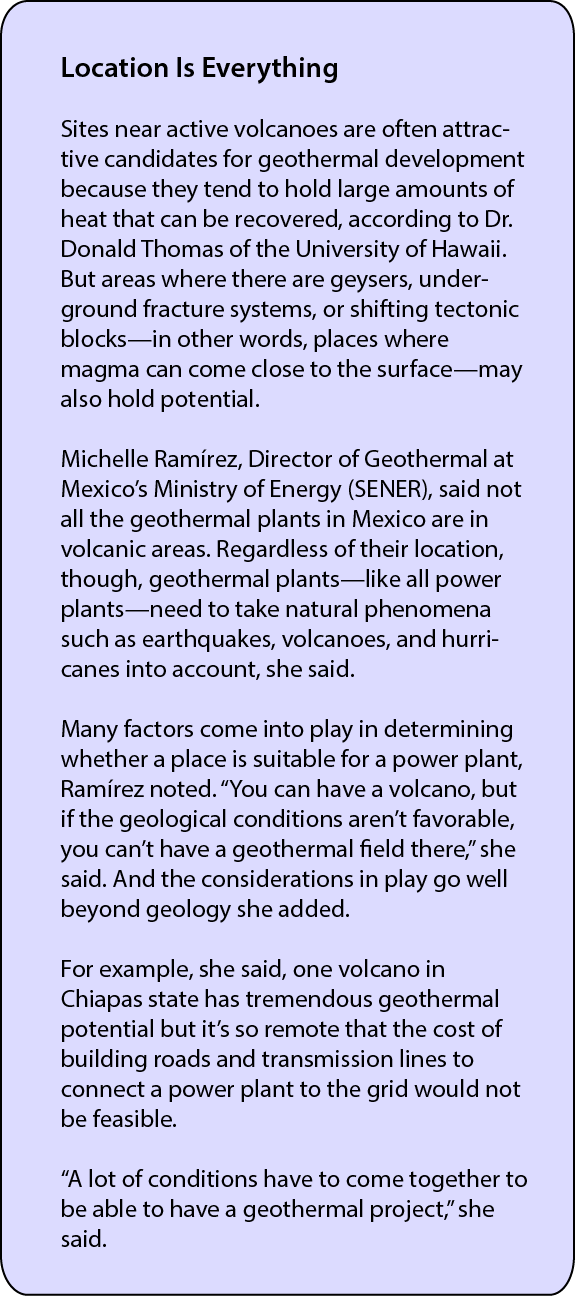
 In fact, the state’s only geothermal power plant—Puna Geothermal Venture (PGV)—has been shut down for more than three months, since lava from Kilauea Volcano began to overrun some of the wellheads. The future of the 38 MW-capacity power plant remains uncertain, as does the progression of the ongoing volcanic activity.
In fact, the state’s only geothermal power plant—Puna Geothermal Venture (PGV)—has been shut down for more than three months, since lava from Kilauea Volcano began to overrun some of the wellheads. The future of the 38 MW-capacity power plant remains uncertain, as does the progression of the ongoing volcanic activity.
“We don’t know how it’s going to play out,” said Dr. Donald Thomas, a geochemist and Director of the University of Hawaii at Hilo’s Center for the Study of Active Volcanoes. “We’re on terra incognita right now.”
Scientists have said the lava flows could last for days, months, or even years. On August 5, though, the Hawaiian Volcano Observatory reported a reduction in earthquakes at Kilauea summit and no movement in the channel where the lava had been flowing from the most active fissure. Those are “strong signs that this phase of the eruption may be ending,” Thomas explained, though he cautioned that lava flows could still “pop out somewhere else or resume in a few days.”
Volcanoes and volcanic eruptions can look very different from each other. In Guatemala, for example, the Volcán de Fuego erupted explosively on June 3, burying the village of San Miguel Los Lotes in a fast-moving current of hot ash and gases called a pyroclastic flow. More than 160 victims of that tragedy have been identified so far, according to Guatemala’s National Institute of Forensic Sciences (INACIF), and more than 260 other people are still missing.
By contrast, the latest eruptive activity on Hawaii Island—the Big Island, as it is commonly called—has been taking place in relative slow motion. It began on May 3, when magma intruded into a part of the volcano known as the lower East Rift Zone and started to come to the surface as lava, flowing into a subdivision known as Leilani Estates. So far, the lava flow has destroyed more than 700 homes and displaced thousands of residents—and has even added land mass to the island as the hot lava reaches the sea.
In a phone interview, Thomas explained that this isn’t a new eruption of Kilauea but a new phase of the volcanic activity that has been going on continuously since 1983 and off and on for hundreds of thousands of years. Still, he added, “this isn’t business as usual. This is an abnormally large event.”
The Center for the Study of Active Volcanoes, which Thomas heads, is not directly involved in studying the Kilauea eruption; it provides training to scientists and technicians from developing countries on monitoring volcano systems. But Thomas has been following the latest local events closely. In a sense, he has been studying Kilauea since the 1970s, when he did his dissertation research on its volcanic gases. He ended up doing geothermal research and exploration on Kilauea for about 25 years, tracking the chemistry of the volcano’s geothermal fluids.
 In the 1970s, University of Hawaii researchers working in the vicinity of the current volcanic activity drilled a borehole and tapped into an extremely hot well. That led to the construction of a small power plant—built largely with federal funds—that operated for most of the 1980s, using the volcano’s hot gases and fluids to power a turbine and generate electricity. (The 3.5 MW plant was designed for research purposes and was always meant to have a short operating life, Thomas said.)
In the 1970s, University of Hawaii researchers working in the vicinity of the current volcanic activity drilled a borehole and tapped into an extremely hot well. That led to the construction of a small power plant—built largely with federal funds—that operated for most of the 1980s, using the volcano’s hot gases and fluids to power a turbine and generate electricity. (The 3.5 MW plant was designed for research purposes and was always meant to have a short operating life, Thomas said.)
The university’s success led to private-sector interest in the area’s geothermal potential, and a few years after the demonstration project was shut down, the power plant now known as Puna Geothermal Venture started operating. Ownership of the plant has changed hands over the years; the current owner is Ormat Technologies, Inc., headquartered in Nevada. (The company has also been involved in several geothermal ventures in Latin America, including in Chile, Costa Rica, Honduras, Guatemala, and Nicaragua, according to its website.)
It was clear from the beginning that this area in lower Puna District was susceptible to lava flows, according to Thomas. “This is not a surprise to me or really to anybody that was involved in geothermal in the early days,” he said of the current volcanic activity. “During the discussion of siting the demonstration power plant, that was very much on our minds. We knew this was an active rift zone. There was a risk that a power plant could be impacted by an eruption.”
Both the demonstration plant and the commercial plant that was eventually built were designed with mitigation in mind, according to Thomas. In the case of the commercial plant, this included placing the power plant at a higher elevation than the wells and building protective structures so that the wellheads and valves could be detached from the surface equipment and enclosed in the event of an eruption. “The idea was that after the flow cools, you could go back in, excavate, and bring the well back into service,” Thomas said.
Ormat Technologies told its shareholders in June that the company could not yet estimate “when the lava flow will stop nor when it will be able to assess all of the damages,” noting that the net book value of the Puna property, plant, and equipment is around $109 million. In its report to shareholders, Ormat also pointed out that its power plant in Amatitlán, Guatemala, is located near an active volcano. “As a result of recent events impacting our Puna facility,” the company said, “we cannot be certain how investors will asses the risks to which our facilities are subject and whether this assessment will adversely impact perceptions of our business and our share prices.”
All sorts of risks are involved in developing a geothermal project, Thomas said. First, there’s a resource risk: Is there geothermal energy there that can be developed in a way that is cost-effective? Then there’s a hazard risk: “You do your field geology to understand what that hazard risk is so that you can mitigate it or make a decision on whether that risk is something that your development model can tolerate.” In some places, he said, regulatory and political issues further complicate the equation: “Is the community going to accept that resource?”
Thomas thinks it’s conceivable that Puna Geothermal Ventures could open again someday, once the lava stops flowing. A similar situation happened many years ago with a geothermal facility in Iceland, he said, and eventually the plant was able to reopen its wells and continue to produce power. In the meantime, he said, geologists continue to evaluate other geothermal prospects around the state.
For now, though, Hawaii is without geothermal power, which accounted for about one-fourth of the Big Island’s energy supply and more than half of its renewable energy generation, according to the State of Hawaii Public Utilities Commission (PUC). It said that in response to the plant shutdown, electricity companies serving the island would expand and accelerate the development of new renewable energy projects, expedite interconnections of rooftop solar and storage, and ramp up energy efficiency programs.
“In the near-term,” the PUC said in a statement in June, “electricity formerly provided by PGV will be generated mostly by burning fossil fuels, increasing air pollution and raising electricity prices for customers.”
Electric rates are already disproportionately high in Hawaii—about four times the U.S. national average, according to Thomas. He thinks it’s “insane” to keep importing oil to generate power, both because of the effects on climate change and because of the economic implications of continuing to send money out of state in a place that has a high cost of living and a scarcity of jobs.
If local press coverage is a barometer, geothermal has its share of detractors. Yet, Thomas said, geothermal energy represents the only economically viable option for renewable baseload power in Hawaii—a state that has made a political commitment to rely solely on renewable sources by 2045.
“It’s very easy to make these commitments, but no one seems to want to actually analyze what the meaning of that is and what has to happen in order to achieve that goal,” he said.
 View Map
View Map